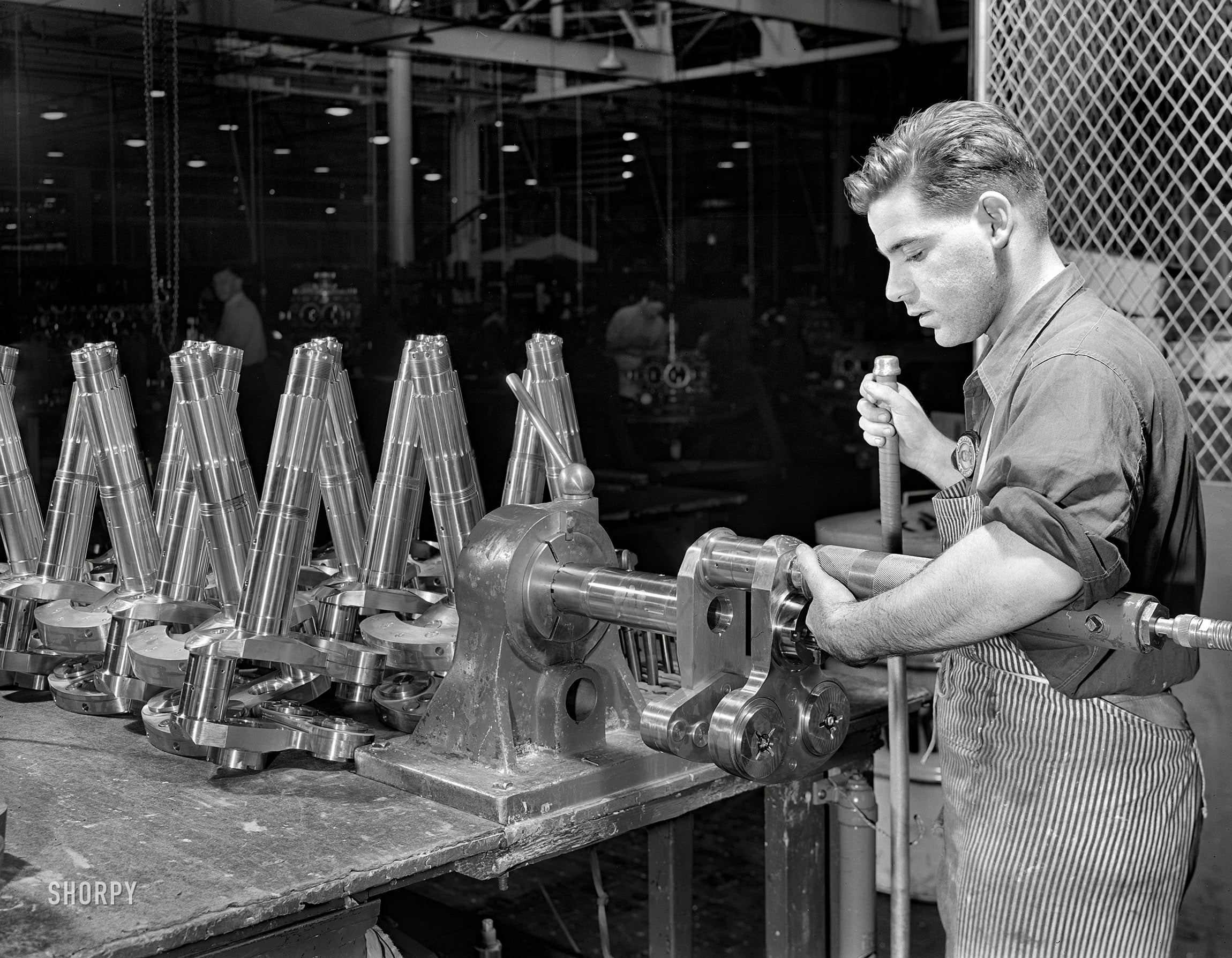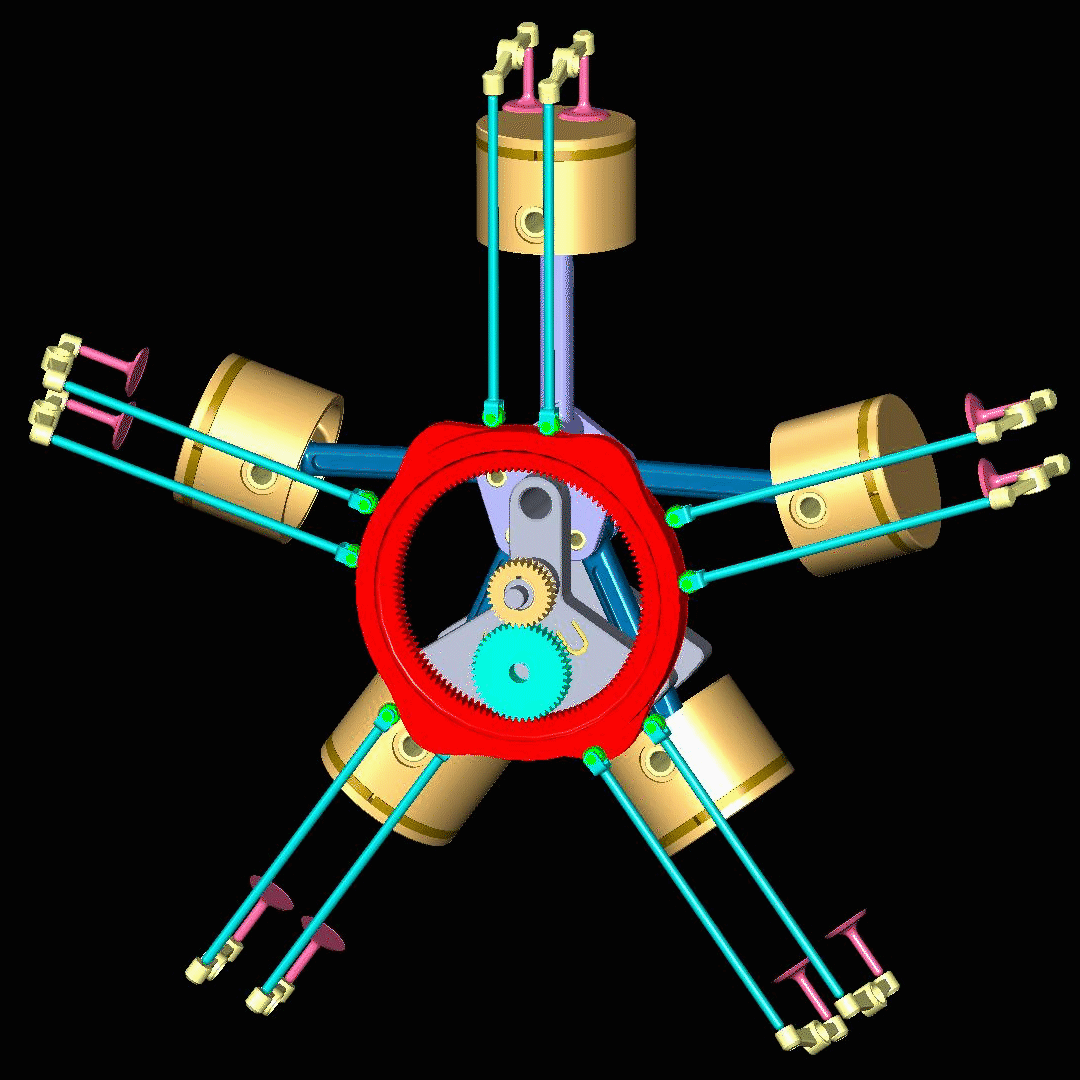 "ttyymmnn" (ttyymmnn)
"ttyymmnn" (ttyymmnn)
03/26/2019 at 09:00 ē Filed to: good morning oppo, Planelopnik
 1
1
 9
9
 "ttyymmnn" (ttyymmnn)
"ttyymmnn" (ttyymmnn)
03/26/2019 at 09:00 ē Filed to: good morning oppo, Planelopnik |  1 1
|  9 9 |
 !!!CAPTION ERROR: MAY BE MULTI-LINE OR CONTAIN LINK!!!
!!!CAPTION ERROR: MAY BE MULTI-LINE OR CONTAIN LINK!!!
Arsenal of Democracy for the win.
In the photo above, a worker at the United Aircraft plant works on crankshaft assemblies for Pratt & Whitney radial aircraft engines. This is the piece that will be turned by the engine. The worker has his gripping tool in the hole where the pushrods will attach, and the weight of that is balanced by the lobe at the bottom. So he is working on the gray part (JHU) in the diagram below.

For a really fantastic description of how a radial engine works, check out these videos of a crazy guy who built a working model of one out of wood.
 Rusty Vandura - www.tinyurl.com/keepoppo
> ttyymmnn
Rusty Vandura - www.tinyurl.com/keepoppo
> ttyymmnn
03/26/2019 at 09:29 |
|
I know this wooden engine YouTube video. I read once that the Merlin engine, I believe it was, the tools no longer exist to machine those parts to those tolerances.
 vondon302
> ttyymmnn
vondon302
> ttyymmnn
03/26/2019 at 09:36 |
|
M achining? Maybe hand lapping.
Still cool though.†
 ttyymmnn
> vondon302
ttyymmnn
> vondon302
03/26/2019 at 09:40 |
|
I donít know. Iím not a machinist.†
 vondon302
> ttyymmnn
vondon302
> ttyymmnn
03/26/2019 at 10:01 |
|
But your a pretty decent historian.
;)
 ttyymmnn
> vondon302
ttyymmnn
> vondon302
03/26/2019 at 10:03 |
|
Thanks. Now, if I can just fix my dryer...
 My X-type is too a real Jaguar
> Rusty Vandura - www.tinyurl.com/keepoppo
My X-type is too a real Jaguar
> Rusty Vandura - www.tinyurl.com/keepoppo
03/26/2019 at 10:04 |
|
Those tools exist and they donít exist like SchrŲdingerís cat. Yes the machines with the fine adjustments to make those parts of that size by hand are long gone replaced by computerized machine tools. If there were enough of a business case to mak those parts in mass production again a computerized version could be set up in a matter of days using a variety of off the shelf components.
Itís just that there isnít dusty machinery in a warehouse somewhere ready to be turned back on.†
 Snuze: Needs another Swede
> ttyymmnn
Snuze: Needs another Swede
> ttyymmnn
03/26/2019 at 10:32 |
|
Iíve been wanting to 3D print some kind of engine, and I think I know what Iím gonna make now!† Thanks for the inspiration!
 Rusty Vandura - www.tinyurl.com/keepoppo
> My X-type is too a real Jaguar
Rusty Vandura - www.tinyurl.com/keepoppo
> My X-type is too a real Jaguar
03/26/2019 at 13:26 |
|
I figured as much. I was counting on Oppo to set the record straight.
 gmporschenut also a fan of hondas
> Rusty Vandura - www.tinyurl.com/keepoppo
gmporschenut also a fan of hondas
> Rusty Vandura - www.tinyurl.com/keepoppo
03/28/2019 at 00:10 |
|
During ww2 and really up to 1970/80s plants would have machines set up to only do a few operations. The worker load the part, perform the operation or two, remove part, and then load the next one. It was why it took as they say 9000 machines to make an engine.
In the early years, the Merlin was a handbuilt engine that was great, but nowehere the level of being production friendly, which was a huge headache for maintenece crews.
now we have cnc machines that can do just about anything. hell they even have ones with built in lasers to measure tool wear and part and can calibrate itself mid build.
So it is an accurate statement, but it is a bit of pearl clutching